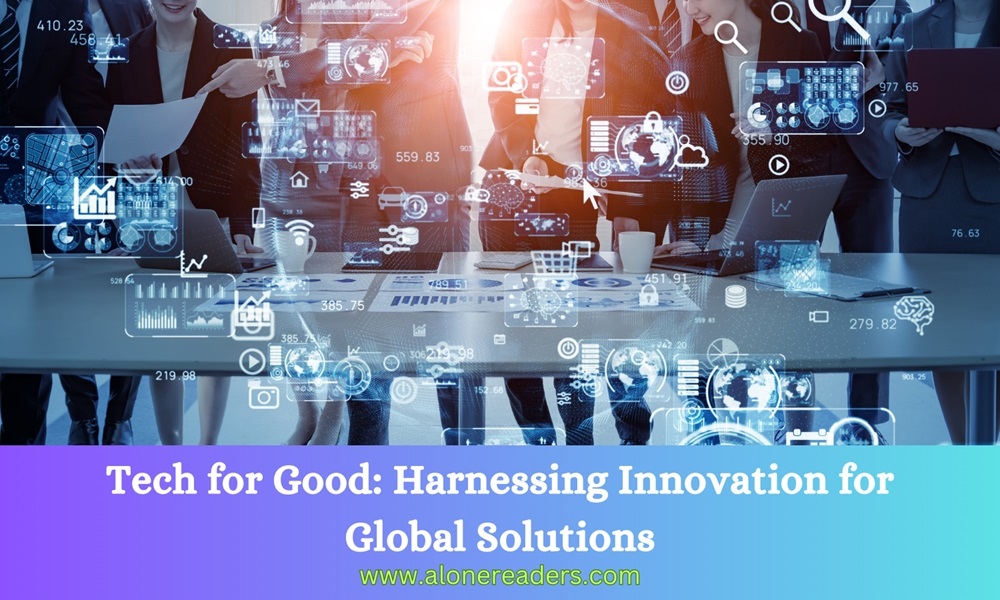
In an era where technology is at the forefront of transformation, its application in addressing some of the world's most pressing challenges cannot be overstated. The concept of 'Tech for Good' encompasses a range of initiatives and innovations aimed at solving critical global issues. This article delves into how technology is not just a tool for economic growth and efficiency but a catalyst for social change and environmental sustainability.
Bridging the Digital Divide
With over half the world now online, the focus has shifted to bridging the digital divide. Technology companies and NGOs are collaborating to bring internet access to remote areas. This connectivity is key to unlocking educational and economic opportunities, thereby reducing poverty and inequality.
Green Tech Innovations
The fight against climate change is being bolstered by green technologies. From renewable energy sources like solar and wind power to innovations in battery technology and smart grids, tech is playing a vital role in reducing carbon footprints and promoting sustainable practices.
AI in Diagnosis and Treatment
Artificial Intelligence (AI) is revolutionizing healthcare. AI algorithms can analyze medical data much faster than humans, leading to quicker diagnoses. Tech giants and startups alike are investing in AI to develop solutions for disease prediction, personalized medicine, and patient care.
Telemedicine and Remote Healthcare
Telemedicine has become particularly significant in the wake of the COVID-19 pandemic. Through remote consultations and AI-powered diagnostics, healthcare is becoming more accessible, especially in underserved areas.
E-Learning Platforms and Digital Classrooms
E-learning platforms have transformed the education landscape, making learning resources accessible to anyone with internet access. Digital classrooms are not just a response to the pandemic but a long-term solution to educational disparities.
Interactive and Personalized Learning
Technological tools are enabling more interactive and personalized learning experiences. AI and Machine Learning algorithms are being used to tailor educational content to individual learning styles and pace, thus improving learning outcomes.
Precision Farming
Advancements in Agricultural Technology (AgriTech) are contributing to food security. Precision farming, which uses data analytics, IoT devices, and AI, optimizes resource use, increases crop yields, and reduces environmental impact.
Biotechnology in Agriculture
Biotechnology is another significant player in this field. Genetic engineering and CRISPR technology are being used to develop crop varieties that are more resistant to pests and climate change, ensuring a steady food supply.
Mobile Banking and Digital Payments
Fintech has been instrumental in promoting financial inclusion. Mobile banking and digital payment platforms have made financial services accessible to the unbanked populations, particularly in developing countries.
Blockchain for Transparency
Blockchain technology is being used to create more transparent and efficient financial systems. It has potential applications in preventing fraud, ensuring secure transactions, and simplifying cross-border payments.
Predictive Analytics for Disaster Preparedness
Technology is crucial in disaster response and crisis management. Predictive analytics can forecast natural disasters, helping in early warning systems and preparedness.
Drones and Robotics in Rescue Operations
Drones and robotics are increasingly used in rescue operations. They can access areas that are dangerous or inaccessible to humans, assisting in search and rescue missions and delivering aid.
'Tech for Good' represents a paradigm shift in how we view technological advancement. It's not just about creating the next big gadget or software but about leveraging technology to address societal, environmental, and economic challenges. As we continue to innovate, the focus must remain on ensuring that technology serves as a force for good, contributing to a sustainable and equitable future for all.